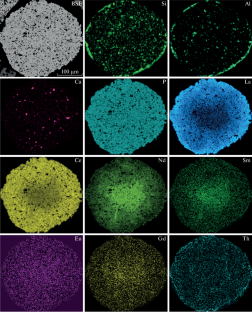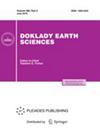俄罗斯萨哈共和国(雅库特)结核莫纳石(Kularite)形成过程中微生物参与的迹象
IF 0.7
4区 地球科学
Q4 GEOSCIENCES, MULTIDISCIPLINARY
引用次数: 0
摘要
摘要 数据表明,微生物在萨哈共和国(雅库特)库拉尔山脉结核独居石(NM)(kularite)的形成过程中发挥了重要作用。NM 中的微生物(蓝藻)以叠层微孔的形式被含稀土元素的磷酸盐(独居石)以及独居石中的框架状铁硫化物所取代。海泡石的珂尔格同位素组成与生物碳相对应:δ13С值从-22.2‰到-22.3‰不等。本文章由计算机程序翻译,如有差异,请以英文原文为准。

Signatures of the Involvement of Microorganisms in the Formation of Nodular Monazite (Kularite), Republic of Sakha (Yakutia), Russia
Abstract
Data indicating the important role of microorganisms in the formation of nodular monazite (NM) (kularite) of the Kular Range, Republic of Sakha (Yakutia), are presented. The NM contains microorganisms (cyanobacteria) replaced by REE-bearing phosphate (monazite) in the form of stromatolitic microedifices, as well as framboidal Fe sulfides in monazite. The Corg isotopic composition of kularite corresponds to biogenic carbon: the δ13С values vary from –22.2 to –22.3‰.
求助全文
通过发布文献求助,成功后即可免费获取论文全文。
去求助
来源期刊

Doklady Earth Sciences
地学-地球科学综合
CiteScore
1.40
自引率
22.20%
发文量
138
审稿时长
3-6 weeks
期刊介绍:
Doklady Earth Sciences is a journal that publishes new research in Earth science of great significance. Initially the journal was a forum of the Russian Academy of Science and published only best contributions from Russia. Now the journal welcomes submissions from any country in the English or Russian language. Every manuscript must be recommended by Russian or foreign members of the Russian Academy of Sciences.
 求助内容:
求助内容: 应助结果提醒方式:
应助结果提醒方式:


